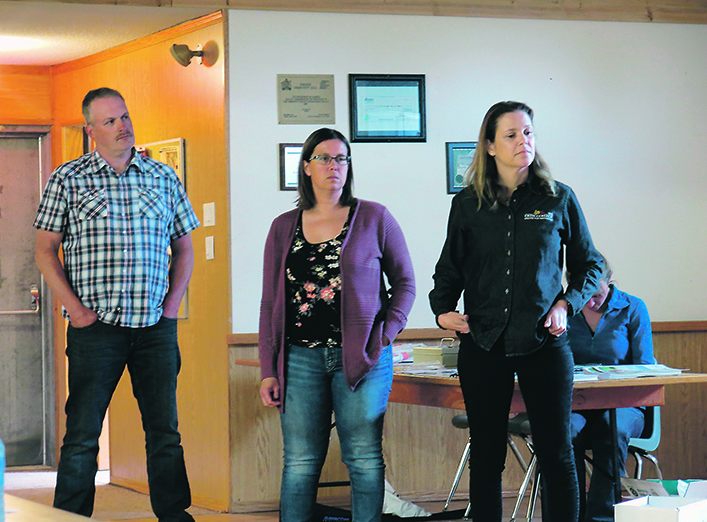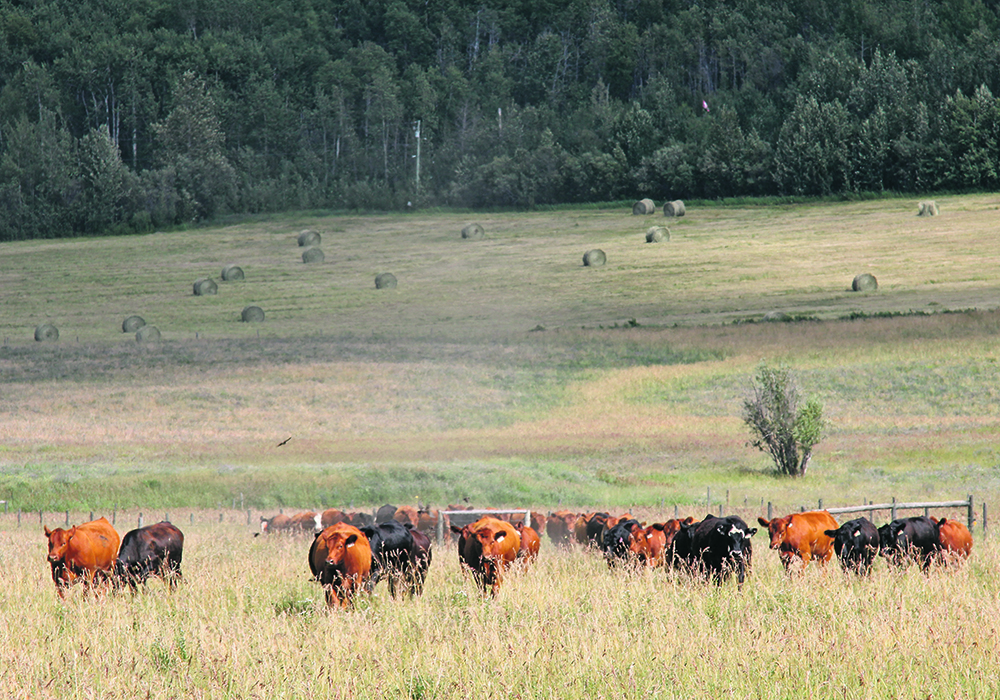Some fear is necessary to prevent stubbornness, but it’s important to ensure they won’t panic inside handling facilities
Cow-calf producers who use calm and gentle handling methods to reduce the stress of their heifers could receive better outcomes such as higher cattle pregnancy rates, says an expert.
“We don’t want to reduce their excitability to the point where they have zero fear towards humans,” said Desiree Gellatly, a research scientist at the Technology Access Centre for Livestock Production at Olds College in Alberta.
Such heifers could become stubborn, making it more difficult for producers to control them, she said. The idea is to instead use simple, time-effective methods over a few days to train them to ensure they don’t have so much fear that they panic inside facilities such as squeeze chutes, she added.
“The main goal with this training is to make the animals understand because cattle, they don’t like novel situations. Every time you have a novel situation, they panic.”
Researchers from the centre worked in 2020 with Neilson Cattle Development near Stettler, Alta., to help train their heifers to be less afraid of routine handling by people, said Gellatly. She spoke at the recent Livestock Roundup 2022 of the Grey Wooded Forage Association northwest of Lacombe, Alta.
Owners Lance and Karyn Neilson were having difficulty managing their cattle, said Gellatly during an interview.
“So, they had to get rid of a large number of animals at that time because they were too excitable, and it’s just Lance and his wife handling the cattle all the time — sometimes, they have their kids, right?”
Heifers that show an excitable temperament during routine handling can cause injury to themselves, their handlers or other animals, said a centre statement. The Neilsons also wanted to improve the success of their heifer development program, which involves breeding the cattle of other producers via artificial insemination, said Gellatly.
The training involved the use of handling acclimation, positive reinforcement and rewards of feed to keep heifers calmer, said the statement. It was tested using about 200 heifers ages 13 to 14 months randomly divided into two pairs of groups.
Each group was held in separate feedlot pens for a total of four groups, with each consisting of an acclimated group and a control group for comparison, said the statement.
“Heifers in the acclimated groups were talked to softly while being fed daily, and every other day offered a small additional feed supplement in the feedlot pen…. Additionally, they were run through the chute on three separate days with feed rewards immediately after handling” for positive reinforcement.
By contrast, heifers in the control groups were fed by feed truck without any interaction with people. They were also not exposed to handling acclimation procedures before breeding.
It was vital to avoid anything in the acclimated groups that could heighten stress, said Gellatly.
Frequent handling will not acclimate the animals if it is accompanied by yelling and hitting, she added.
“You’re going to have the opposite… so it definitely improves the welfare of the animals by reducing their fear and having a low-stress technique.”
Heifers initially assessed by researchers as either calm or excitable “on average remained calm or reduced their excitability after being acclimated, which lasted for four weeks,” said the statement. Heifers that were extremely excitable remained the same, which is likely due to underlying genetics that help reinforce their temperament, said Gellatly.
Previous research has shown that acute stress causes the release of cortisol in cattle, she said. The hormone inhibits ovulation, reducing reproductive efficiency.
Scientists found that heifers at Neilson Cattle Development that were acclimated to the handling facilities had lower concentrations of cortisol in their saliva compared to the control groups, said the statement.

As a result, pregnancies were boosted by about two to three extra calves for every 100 animals for what amounted to only a small investment of time, said Gellatly. Although it was less than results of up to seven calves obtained in her home country of Brazil, scientists there used “long-term training, like over two or three months, something like that — totally unfeasible for a commercial beef producer,” she said.
Further research has been conducted by the centre to see if things such as pregnancy rates could be further increased using its training techniques, although results are not yet in.
Scientists are also interested in seeing if they can confirm their preliminary results at Neilson Cattle Development by duplicating them with other producers, said Gellatly. Meanwhile, the Neilsons have observed other positive outcomes from the training that researchers haven’t yet confirmed, she said.
They include making it potentially easier for producers to assist during calving because heifers aren’t as agitated, she said. Calves from excitable heifers that weren’t acclimated also seemed to have a higher percentage of sickness, as well as smaller birth weights, she added.
“So, there’s definitely other things that we want to assess in the long-term effects to the acclimation process.”
















